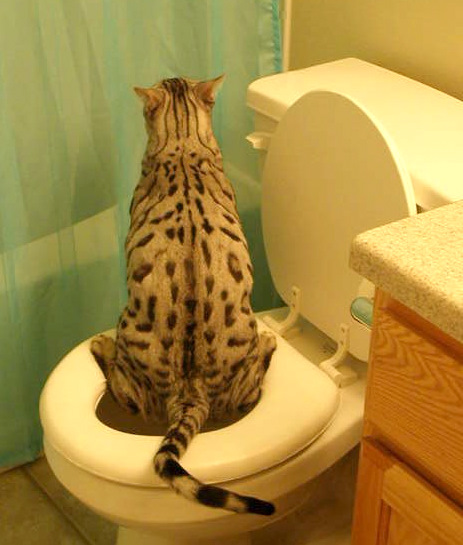Why You Should Avoid Flush Cat Poop Down Your Toilet - Crucial Facts
Why You Should Avoid Flush Cat Poop Down Your Toilet - Crucial Facts
Blog Article
This great article following next on the subject of Don’t flush cat feces down the toilet is highly stimulating. Read it for your own benefit and decide what you think about it.

Introduction
As pet cat owners, it's essential to bear in mind exactly how we take care of our feline friends' waste. While it might appear practical to flush cat poop down the commode, this method can have harmful consequences for both the setting and human wellness.
Ecological Impact
Flushing cat poop presents damaging pathogens and bloodsuckers into the water, presenting a significant threat to water ecological communities. These pollutants can adversely influence marine life and compromise water quality.
Health and wellness Risks
In addition to environmental concerns, flushing cat waste can likewise position health and wellness dangers to humans. Cat feces may contain Toxoplasma gondii, a bloodsucker that can cause toxoplasmosis-- a potentially serious ailment, specifically for pregnant women and individuals with weakened immune systems.
Alternatives to Flushing
Luckily, there are more secure and more responsible ways to deal with pet cat poop. Think about the adhering to choices:
1. Scoop and Dispose in Trash
The most typical approach of throwing away cat poop is to scoop it into a naturally degradable bag and throw it in the garbage. Make sure to utilize a dedicated clutter scoop and take care of the waste immediately.
2. Usage Biodegradable Litter
Go with biodegradable feline trash made from materials such as corn or wheat. These trashes are eco-friendly and can be securely gotten rid of in the garbage.
3. Hide in the Yard
If you have a lawn, take into consideration hiding pet cat waste in a marked location far from veggie yards and water resources. Make sure to dig deep sufficient to avoid contamination of groundwater.
4. Set Up a Pet Waste Disposal System
Invest in a pet waste disposal system especially made for feline waste. These systems utilize enzymes to break down the waste, reducing smell and environmental impact.
Conclusion
Liable pet dog possession prolongs beyond providing food and shelter-- it additionally includes appropriate waste management. By avoiding purging feline poop down the toilet and opting for different disposal techniques, we can minimize our environmental impact and secure human health.
Why Can’t I Flush Cat Poop?
It Spreads a Parasite
Cats are frequently infected with a parasite called toxoplasma gondii. The parasite causes an infection called toxoplasmosis. It is usually harmless to cats. The parasite only uses cat poop as a host for its eggs. Otherwise, the cat’s immune system usually keeps the infection at low enough levels to maintain its own health. But it does not stop the develop of eggs. These eggs are tiny and surprisingly tough. They may survive for a year before they begin to grow. But that’s the problem.
Our wastewater system is not designed to deal with toxoplasmosis eggs. Instead, most eggs will flush from your toilet into sewers and wastewater management plants. After the sewage is treated for many other harmful things in it, it is typically released into local rivers, lakes, or oceans. Here, the toxoplasmosis eggs can find new hosts, including starfish, crabs, otters, and many other wildlife. For many, this is a significant risk to their health. Toxoplasmosis can also end up infecting water sources that are important for agriculture, which means our deer, pigs, and sheep can get infected too.
Is There Risk to Humans?
There can be a risk to human life from flushing cat poop down the toilet. If you do so, the parasites from your cat’s poop can end up in shellfish, game animals, or livestock. If this meat is then served raw or undercooked, the people who eat it can get sick.
In fact, according to the CDC, 40 million people in the United States are infected with toxoplasma gondii. They get it from exposure to infected seafood, or from some kind of cat poop contamination, like drinking from a stream that is contaminated or touching anything that has come into contact with cat poop. That includes just cleaning a cat litter box.
Most people who get infected with these parasites will not develop any symptoms. However, for pregnant women or for those with compromised immune systems, the parasite can cause severe health problems.
How to Handle Cat Poop
The best way to handle cat poop is actually to clean the box more often. The eggs that the parasite sheds will not become active until one to five days after the cat poops. That means that if you clean daily, you’re much less likely to come into direct contact with infectious eggs.
That said, always dispose of cat poop in the garbage and not down the toilet. Wash your hands before and after you clean the litter box, and bring the bag of poop right outside to your garbage bins.
https://trenchlesssolutionsusa.com/why-cant-i-flush-cat-poop/

Do you enjoy more info about How to Dispose of Cat Poop and Litter Without Plastic Bags? Try leaving a remark down below. We will be delighted to listen to your feelings about this blog entry. We hope that you come back again in the near future. So long as you appreciated our blog posting plz do not forget to pass it around. Thanks for your time. Visit again soon.
Go Deal Report this page